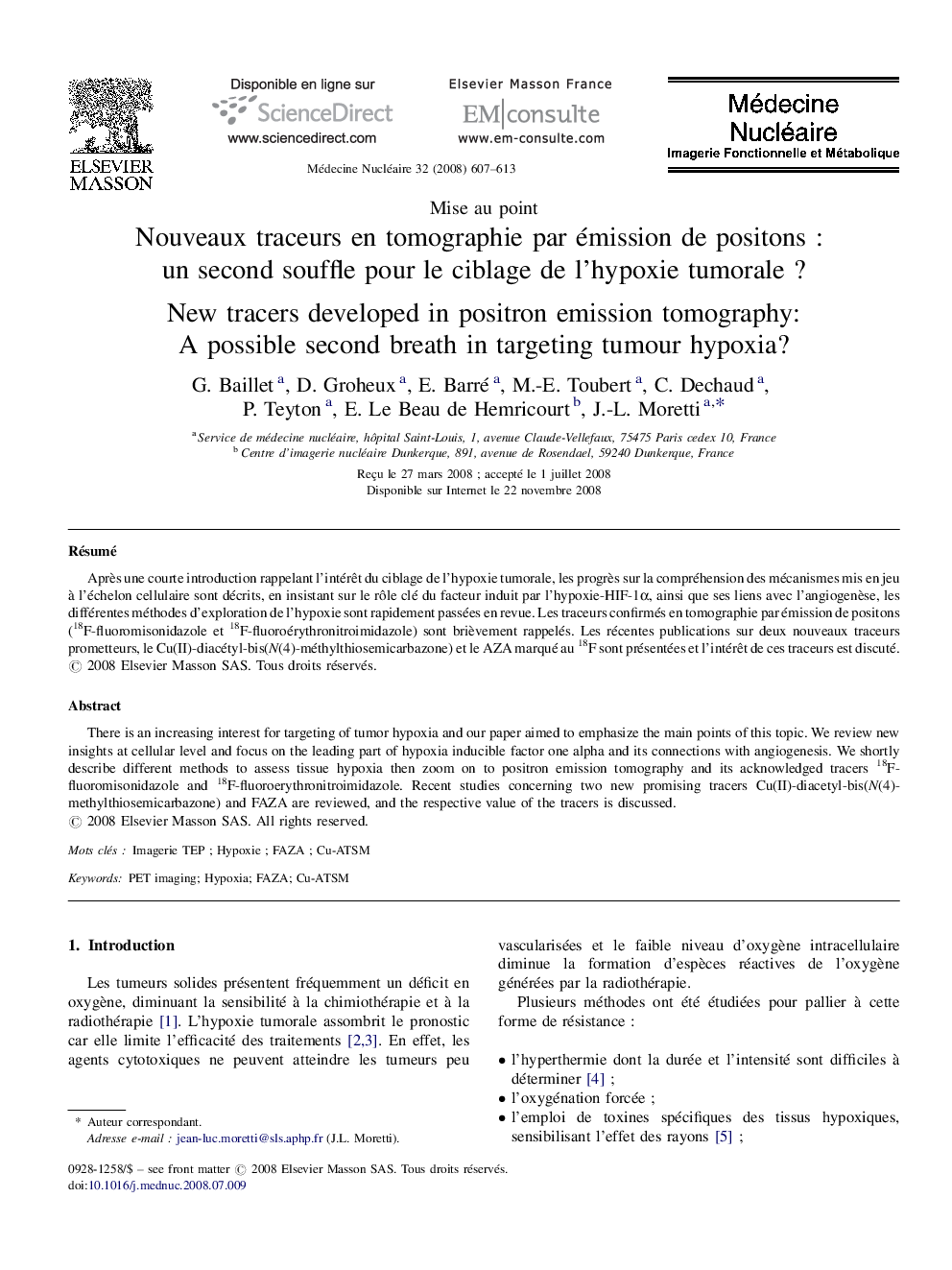| Article ID | Journal | Published Year | Pages | File Type |
|---|---|---|---|---|
| 4244822 | Médecine Nucléaire | 2008 | 7 Pages |
RésuméAprès une courte introduction rappelant l’intérêt du ciblage de l’hypoxie tumorale, les progrès sur la compréhension des mécanismes mis en jeu à l’échelon cellulaire sont décrits, en insistant sur le rôle clé du facteur induit par l’hypoxie-HIF-1α, ainsi que ses liens avec l’angiogenèse, les différentes méthodes d’exploration de l’hypoxie sont rapidement passées en revue. Les traceurs confirmés en tomographie par émission de positons (18F-fluoromisonidazole et 18F-fluoroérythronitroimidazole) sont brièvement rappelés. Les récentes publications sur deux nouveaux traceurs prometteurs, le Cu(II)-diacétyl-bis(N(4)-méthylthiosemicarbazone) et le AZA marqué au 18F sont présentées et l’intérêt de ces traceurs est discuté.
There is an increasing interest for targeting of tumor hypoxia and our paper aimed to emphasize the main points of this topic. We review new insights at cellular level and focus on the leading part of hypoxia inducible factor one alpha and its connections with angiogenesis. We shortly describe different methods to assess tissue hypoxia then zoom on to positron emission tomography and its acknowledged tracers 18F-fluoromisonidazole and 18F-fluoroerythronitroimidazole. Recent studies concerning two new promising tracers Cu(II)-diacetyl-bis(N(4)-methylthiosemicarbazone) and FAZA are reviewed, and the respective value of the tracers is discussed.
